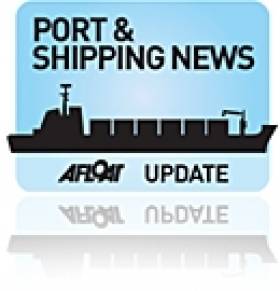Displaying items by tag: MY Lyubov Orlova
Missing 'Ghost Ship' May Have Sunk In Atlantic
#GhostShip - The Irish Coast Guard is on alert after indications that the missing 'ghost ship' MV Lyubov Orlova may have sunk in the Atlantic as it drifted towards Ireland's coast.
RTÉ News reports that an emergency transponder signal on the vessel that only activates on contact with water was picked up by coastguard monitors last week.
No sign of the ship was detected in satellite images of the area some 1,700km west of Valentia where the signal originated, leading to speculation that the ship has sunk.
But the possibility that the signal device was washed overboard cannot be ruled out.
As previously reported on Afloat.ie, the MV Lyubov Orlova was being transported from Canada to the Caribbean for scrapping in late January when it broke free of its tow-line and went adrift in the Atlantic in the general direction of Europe.
With no lights and its Automatic Identification System (AIS) switched off, it could not be located by conventional means - leading the Irish Coast Guard to collaborate with marine surveillance expert Guy Thomas on his new Global Maritime Awareness system in the hopes of detecting the vessel as it approached Irish waters.
The MV Lyubov Orlova is the sister ship of the polar cruiser Clipper Adventurer, the first ever cruise liner to visit Drogheda Port when it entered the mouth of the Boyne last summer.























